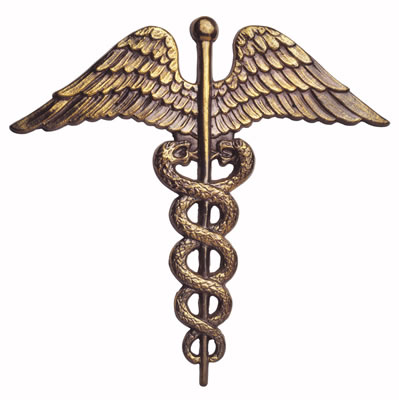|
This e-newsletter is sponsored by
|
|
Contact Us | |
American Society of
Bariatric Physicians
2821 S. Parker Road, Ste. 625
Aurora, CO 80014
office 303.770.2526 | asbp.org
Staff
Laurie Traetow, CPA
Executive Director
laurie@asbp.org
Karen Brenning
Office Manager &
Membership Coordinator
karen@asbp.org
Heidi Gordon
Director of Marketing &
Communications
heidi@asbp.org
Anna Hansen
Membership &
Exhibit Sales Manager
anna@asbp.org
Dana Mansell
CME Director &
Business Manager
dana@asbp.org
Stacy Schmidt, Ph.D.
Health Director
stacy@asbp.org
SPECIAL NOTE:
The ASBP office will close at noon (MDT) on Monday, Dec. 24, and reopen on Wednesday, Dec. 26. The office also will close at noon (MDT) on Monday, Jan. 31, and reopen on Wednesday, Jan. 2. Also, please note that this is the final 2012 issue of Obesity Medicine eWeekly. Please watch your inbox for the next issue during the first week of January. |
|
|
|
Obesity Medicine e-Weekly |
|
News
 ASBP health director's article published in International Journal of Obesity ASBP health director's article published in International Journal of Obesity
An article co-authored by ASBP Health Director Stacy Schmidt, Ph.D., (Denver) appears in the December 2012 issue of International Journal of Obesity. To review an abstract of the article, titled " The effects of short-term overfeeding on energy expenditure and nutrient oxidation in obesity-prone and obesity-resistant individuals," click here (full article access is available only via log-in).
 USDA Food & Nutrition Service releases School Nutrition Dietary Assessment Study IV USDA Food & Nutrition Service releases School Nutrition Dietary Assessment Study IV The U.S. Department of Agriculture (USDA) Food & Nutrition Service recently released a comparison of the nutritional quality of school meals since 1999. Highlighted findings from the study include:
- Most schools (85 percent) offered lunches that met standards for key nutrients (protein, vitamin A, vitamin C, calcium and iron).
- Among elementary schools, the percentage of schools that served average lunches that met the school meals initiative standard for saturated fat increased from 34 percent in school year 2004-05 to 53 percent in 2009-10. For secondary schools, the percentage of schools meeting the standard almost doubled, from 24 percent in 2004-05 to 46 percent in 2009-10.
- Schools have not made progress toward meeting the sodium target over time. At all three points in time, less than 10 percent of elementary or secondary schools served lunches with an average sodium content that was within 200 mg of the recommended maximum.
Click here to download a summary of the study, or access the USDA Food & Nutrition Service's web page about the study here. |
Resources  Obesity Updates:
Click titles to view articles
Effects of aerobic and/or resistance training on body mass and fat mass in overweight or obese adults
The benefits of regular exercise are well documented, but the rationale underlying the exercise mode recommendations for weight loss and maintenance remains unclear. The STRRIDE-AT/RT study (Studies of a Targeted Risk Reduction Intervention through Defined Exercise-Aerobic and Resistance Training) determined whether resistance training (RT) decreased fat mass in overweight and obese adults, whether aerobic training (AT) or RT was more effective at fat mass reduction when duration was held constant and whether a combination of aerobic and resistance training (AT/RT) provided additive improvements in body composition. Sedentary, overweight or obese adults (n=119) were randomized to one of three 8-month exercise protocols: (1) RT, (2) AT and (3) combination of AT and RT. Primary outcomes included total body mass, fat mass and lean body mass. The researchers found that AT and AT/RT groups reduced total body mass and fat mass more than RT (P < 0.05), but they were not different from each other. RT and AT/RT increased lean body mass more than AT (P < 0.05). In summary, if increasing muscle mass and strength is the goal, a program including RT is required. Since AT/RT required double the time commitment, though, it appears that AT alone is the optimal mode of exercise for reducing fat mass and total body mass, if individuals aim to balance their time commitments with the health benefits of the exercise.
Calorie restriction and metabolic flexibility
Caloric restriction (CR) provides metabolic benefits in a variety of non-human animal species; however, whether or not these benefits translate to humans is unclear. The National Institutes of Health-sponsored Comprehensive Assessment of the Long-term Effects of Reducing Intake of Energy (CALERIE) was a Phase I pilot study that examined the potential health benefits of CR in sedentary, non-obese, healthy individuals. In this analysis of data from the Pennington-site CALERIE, researchers sought to understand if CR could improve metabolic flexibility. Forty-six volunteers were randomized to a weight maintenance diet (Control), 25 percent CR, or 12.5 percent CR plus 12.5 percent energy deficit from structured aerobic exercise (CR+EX), or a liquid calorie diet (890 kcal/d until 15 percent reduction in body weight) for six months. Fasting and postprandial plasma samples were obtained at baseline, three and six months and insulin sensitivity was determined via intravenous glucose tolerance test. Overall, CR improved metabolic flexibility evidenced by higher fasting acylcarnitines (AC) and free fatty acid concentrations and widened fasting-to-postprandial difference (FPPD) gradients for these metabolites. Furthermore, the change in the FPPD gradient of AC and amino acid concentration was related to improvements in insulin sensitivity.
Benefits of menopausal HRT, timing is key
Much controversy exists regarding the costs, benefits and safety of hormone replacement therapy (HRT) in postmenopausal women. A Danish study on the long-term effect of hormone replacement therapy on cardiovascular outcomes in recently postmenopausal women, though, found that this approach to HRT might lead to reductions in cardiovascular risk throughout the aging process, without any apparent increase in risk of cancer, venous thromboembolism or stroke. |
|
Education
Save the Date for ASBP Spring Obesity Conference in San Diego on April 24-28
 Save the date for the ASBP 2013 Spring Obesity Conference in San Diego on April 24-28 at the Manchester Grand Hyatt. Further details will be announced in the near future; however, online registration is now open, or you may download and complete a PDF registration form for return via fax or USPS mail.Hotel reservations can be made online and start at $199+taxes (single/double). Save the date for the ASBP 2013 Spring Obesity Conference in San Diego on April 24-28 at the Manchester Grand Hyatt. Further details will be announced in the near future; however, online registration is now open, or you may download and complete a PDF registration form for return via fax or USPS mail.Hotel reservations can be made online and start at $199+taxes (single/double).
2013 Obesity Basic Medical Treatment Courses start Jan. 19 in Columbus, Ohio
 The Obesity Medicine Association, a division of the Society, recently announced a partial list of 2013 dates and locations for the popular Obesity Basic Medical Treatment Course. Attendees earn 7 hours of continuing medical education, plus ASBP offers a $30 discount on the second and subsequent registrations received from the same office. The registration fee is $199, if received by the Wednesday prior to the course date. The course provides basic clinical information and tools to effectively treat obese patients and their related conditions. Learn more by downloading a PDF brochure. Click here to download a registration form and read details about the course. Online registration is available for these dates and locations: The Obesity Medicine Association, a division of the Society, recently announced a partial list of 2013 dates and locations for the popular Obesity Basic Medical Treatment Course. Attendees earn 7 hours of continuing medical education, plus ASBP offers a $30 discount on the second and subsequent registrations received from the same office. The registration fee is $199, if received by the Wednesday prior to the course date. The course provides basic clinical information and tools to effectively treat obese patients and their related conditions. Learn more by downloading a PDF brochure. Click here to download a registration form and read details about the course. Online registration is available for these dates and locations:
- Jan 19: Columbus, Ohio 
- Jan. 26: Independence, Mo.
- Feb. 2: Birmingham, Ala.
- Feb. 23: Raleigh-Durham, N.C.
- March 2: Buffalo, N.Y.
- March 9: Oklahoma City
- March 16: Richmond, Va.
- March 23: Louisville, Ky. |
|
Advocacy
 Reminder! December issue of ASBP Capitol Resource still available for download Reminder! December issue of ASBP Capitol Resource still available for download In case you missed the notice on Dec. 5, please be sure to check out this month's issue of the Society's monthly advocacy newsletter, which is available for download. Topics include:
- Feds Issue Bevy of ACA Regulations on:
- Essential Health Benefits
- Employer Wellness Programs
- Multi-State Health Plans
- Obesity Community Participates in EEOC Meeting on Employer Wellness Programs
|
|
|
|
|